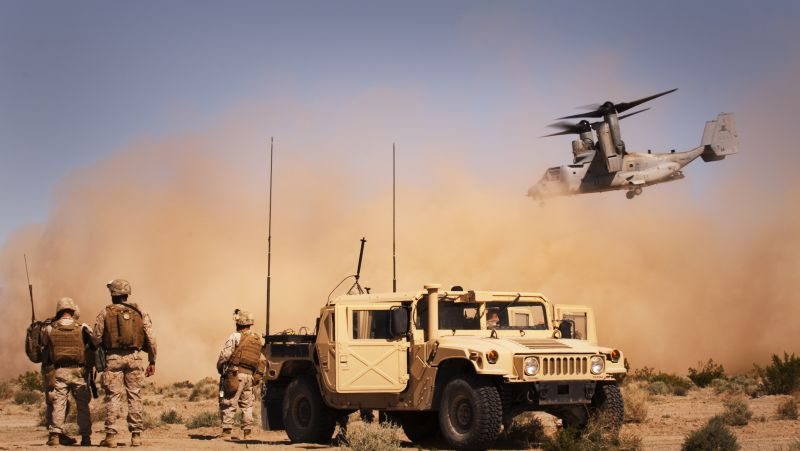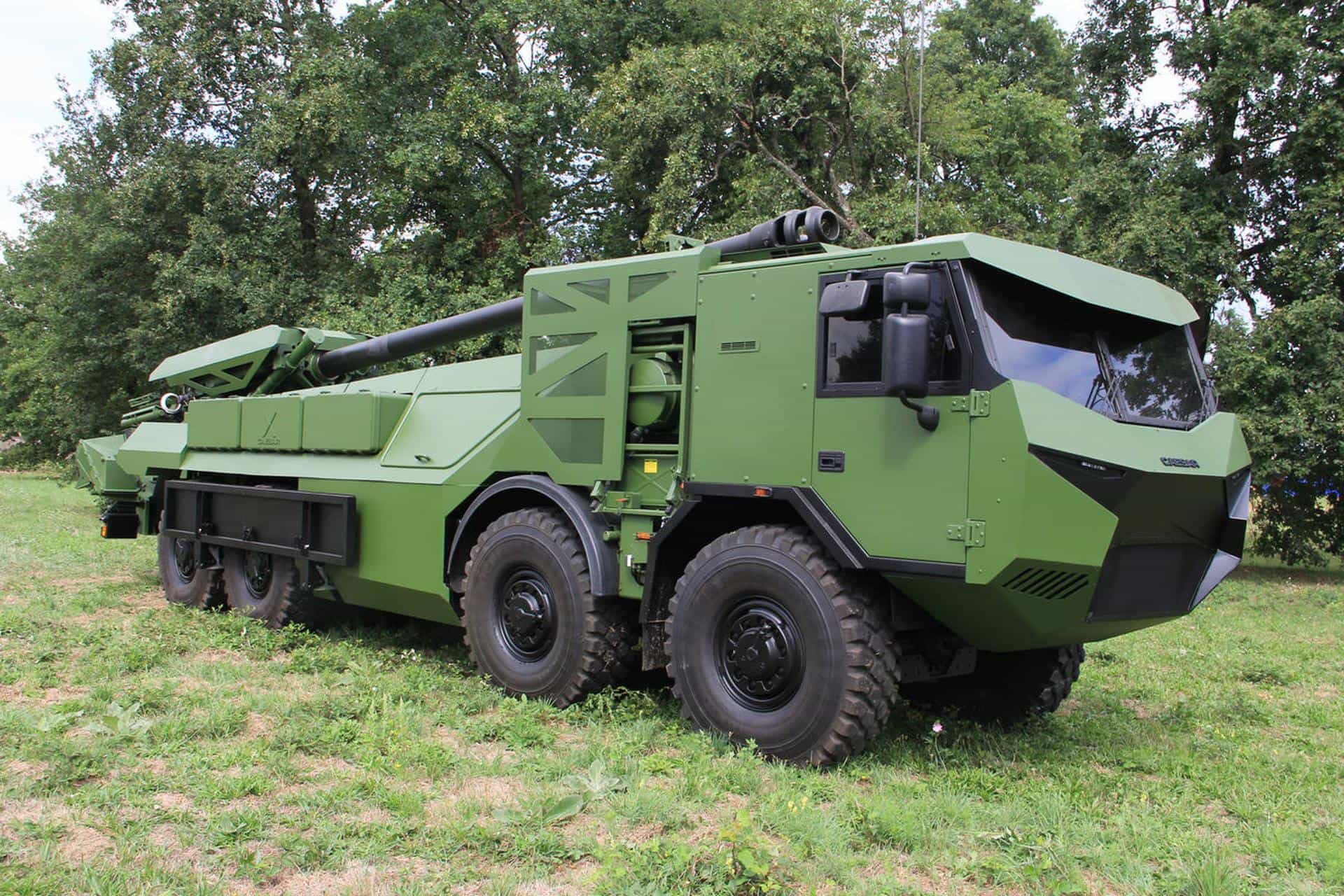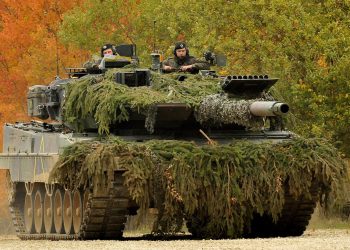Improved energy efficiency ties directly to mission success, said Katherine Hammack, assistant secretary of the Army for Installations, Energy & Environment.
Hammack said the focus of the Army’s energy policy is on the Soldier.
“We want the Soldier to be able to fight longer and go farther on the same or less amount of energy, and, reduce the logistical tail to getting him there,” she explained.
That’s something everyone should be concerned about, she said, especially since October has been designated as Energy Awareness Month.
Something as simple as improving a battery can increase Soldiers’ combat effectiveness, Hammack said.
“A Soldier might be carrying 15 to 20 pounds of batteries to power his night-vision goggles, cellphone, laptop, GPS and radio used for communications,” she said. “And, he’d carry other batteries as backups to those and in some cases backups to the backups.
“We’re migrating to rechargeable batteries and pushing them out to the field,” she continued. “Fewer batteries means less weight to carry to the fight.”
Soldiers are now even wearing rechargeable batteries. Hammack said they are issued a plate-shaped conformal battery that attaches inside one of the side plates of their body armor with wires running through the armor to power energy-consuming devices like night-vision goggles and radios.
Along with fewer batteries, she said there are now more devices available in which to recharge them.
“Soldiers can plug them into vehicle cigarette lighters, solar panels, clamp them to vehicle batteries or attach them to a tube of methane or propane or a fuel cell,” she said. “We’re pushing this type of technology out to the units, training Soldiers to use it and feel confident with it.”
Training and Doctrine Command and the U.S. Military Academy are adding energy security classes and information to their training curriculum and manuals, she said.
Getting Soldiers to the fight and resupplying them is another energy focus. Hammack said the Army is seeking to produce more energy-efficient helicopter engine replacements as they reach the end of their service lives.
“We wanted engines with twice the torque to double our payload lift capacity, using 25 percent less energy consumption to travel farther,” she said. “It sounds a little idealistic, but developers stepped up to the challenge and several models on bench-test look like they’re going to deliver that to us.”
Hammack said the Army is realizing this efficiency with vehicles as well, citing the FED Bravo — a hybrid-electric Humvee variant. She said the vehicle has doubled the fuel efficiency of a regular Humvee and that when the driver brakes, the energy goes to recharging the batteries instead of dissipating as heat.
She provided an example of how the vehicle could be deployed in theater: “A Soldier could travel silent on battery for, say, 20 minutes. That in itself would be a tactical advantage (reduced noise). And then he could do a security stop for two hours, then move out on engine power.”
The FED Bravo is not yet deployed, but Hammack said the Army is shortening the time that equipment like this vehicle moves from development to fielding.
The Army is using hybrid vehicles — but they are the small, robotic-type, she explained.
“We’ve deployed a lot of these in theater,” she said. “They’re used a lot for route clearance and are particularly useful in rugged terrain where roads are too small for traditional route-clearance vehicles. In the past, we’ve had Soldiers going down those roads where [improvised explosvie devices] might be planted. Now, the robots — which resemble Bobcat tractors you might see on the farm — are remotely operated by the Soldier and he’s protected.”
Over the last few years, the Army has been increasing energy efficiency on small outposts in theater.
“There’s this small unit in Afghanistan guarding a mountain pass and protecting a village,” she said. “There are no roads there so the Soldiers were resupplied by air every three days. About 75 percent of the airlift was fuel and water.”
The Army sent a team out with improved energy efficiency technology and now the base is resupplied just once every 10 days. The amount of fuel and water was reduced to 60 percent of the payload, Hammack said. She added that Soldiers can now focus on the mission instead of stopping for logistics.
“Logistics is no longer the anchor dragging behind you,” Hammack said. “There’s also less fuel consumed by the aircraft and they can be used for other missions. For what we did, our return on investment was about 400 percent.”
Some of this technology will likely have spinoffs for the civilian sector, she said. “For instance, when your car isn’t being driven, it could be used to put power back to the grid.”
In addition to improving energy efficiency for Soldiers and their vehicles and equipment, the Army is making advancements in energy on its permanent installations.
“In an era of increasing energy costs and limited resources, we’re working to lower the cost of energy, while increasing mission effectiveness,” she said, explaining that the Army is working to reduce installations’ dependence on the local power grid.
“The recent (windstorm) took out a lot of aging power lines in the [Washington] D.C. area, including on the installations. We’re not yet as self-sufficient as we’d like to be, but we’re getting there,” she said, explaining that the Army is looking into all renewable-energy options including solar, wind, geothermal, biomass, ocean thermal and wave technology.
The Army has renewable energy goals in its sights: “We made a commitment to use 1 gigawatt (1 billion watts) of renewable energy by 2025, in 30 to 40 locations,” she said. “That would make us less dependent on the (less efficient) long-distance power lines.”
Hammack said more renewable energy would benefit communities surrounding the installations as well. “They’re sending power to installations now. (With renewable energy) we could put energy on the grid for those communities or use less. It would be especially beneficial during peak usage hours.”
The Army hopes to save money on its energy initiatives through public-private partnerships.
“We’re not asking Congress for $7 billion to do it. We’re going to invite developers to come on Army installations and build geothermal, biomass, wind turbine, solar photovoltaic and buy energy from them,” she said. “We’re finding that quite often, that energy is lower cost or the same price as what we purchase from the grid. Some of the savings come from energy lost over long distances.”
In some cases, the energy provider might be the local utility itself, if it is more cost-effective than what a private developer might offer, she added.
Mission requirements are the Army’s highest priority so the energy plan would have to support the mission, she said. “Besides price, we’d want to look at what technology would work best for the land on the installation. For example, a solar field on a training installation would interfere with training, but might be suitable on land bordering a community, where the panels could serve as noise buffers. In the same regard, wind turbines would be located away from airfields (to comply with height restrictions).
The Army has some other energy goals for its installations:”We’re identifying 100-300 megawatts of power a year (to be replaced with) renewable energy,” she said. “The Army Corps of Engineers is facilitating that effort. They’ve drafted multiple award task-order contracts with $7 billion contracting capacity. This is a huge opportunity for the renewable energy industry to have a large customer (the Army). Business will be around for a long time.
“The $7 billion estimate was based on work we did in 2009 when we stood up the Energy Initiatives Task Force,” she said. “So maybe we won’t need all that $7 billion contracting capacity.”
She thinks the savings could come from improved technology in the last couple of years, such as a 50-percent reduction in the cost of voltaics.
The Army is not ditching its traditional theme of energy conservation. “Soldiers still need to heed the advice their mothers gave them. ‘Turn out the lights and close the door when you go out.’ It’s especially important in a deployed situation where little things like that add up. Minor behavioral changes mean less fuel that has to be delivered, less time out of the mission to guard routes that deliver the fuel,” Hammack said.
“Every Soldier can do his part to help us be more energy efficient and increase mission effectiveness.”










